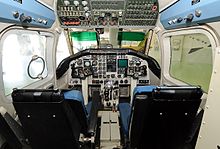
The Piper PA-24 Comanche is an American single-engine, low-wing, all-metal monoplane of semimonocoque construction with tricycle retractable landing gear and four or six seats. The Comanche was designed and built by Piper Aircraft and first flew on May 24, 1956. Together with the PA-30 and PA-39 Twin Comanches, it made up the core of Piper's lineup until 1972, when the production lines for both aircraft were destroyed in the 1972 Lock Haven flood.

The Aero Boero AB-95 is a small Argentine civil utility aircraft that first flew on March 12, 1959. It was built by Aero Boero S.A. of Córdoba. The AB-95 is a conventional high-wing monoplane built of fabric-covered metal structure. It has fixed undercarriage.

The PA-25 Pawnee is an agricultural aircraft produced by Piper Aircraft between 1959 and 1981. It remains a widely used aircraft in agricultural spraying and is also used as a tow plane, or tug, for launching gliders or for towing banners. In 1988, the design rights and support responsibility were sold to Latino Americana de Aviación of Argentina.

The Piper PA-44 Seminole is an American twin-engined light aircraft manufactured by Piper Aircraft.

The Piaggio PD.808 was an Italian business jet built by Piaggio. It was designed as a joint venture between Piaggio and Douglas Aircraft Company of Long Beach, California, United States.

The Piper PA-48 Enforcer is an American turboprop-powered light close air support aircraft built by Piper in the 1970s. It is a development of the World War II-era North American P-51 Mustang fighter. The Enforcer concept was originally created and flown as the Cavalier Mustang by David Lindsay, owner of Cavalier Aircraft, in response to the United States Air Force PAVE COIN program, but Cavalier did not have the manufacturing abilities to mass-produce the Enforcer, so the program was sold to Piper by Lindsay in 1970.

The Piper PA-31 Navajo is a family of twin-engined utility aircraft designed and built by Piper Aircraft for small cargo and feeder airlines, and as a corporate aircraft. Production ran from 1967 to 1984. It was license-built in a number of Latin American countries.

The Cessna 421 Golden Eagle is an American six or seven seat twin-engined light transport aircraft, developed in the 1960s by Cessna as a pressurized version of the earlier Cessna 411.

The Beechcraft Queen Air is a twin-engined light aircraft produced by Beechcraft in numerous versions from 1960 to 1978. Based upon the Twin Bonanza, with which it shared key components such as wings, engines, and tail surfaces, it had a larger fuselage, and served as the basis for the highly successful King Air series of turboprop aircraft. Its primary uses have been as a private aircraft, utility, and small commuter airliner. Production ran for 17 years.

The Zlín Z 43 is a Czech four-seat light aircraft. A development of the two-seat Zlín Z 42, it is a low-wing monoplane. A developed version, the Zlín Z 143 remains in production.

The Grob G 120 is a two-seat training and aerobatic low-wing aircraft with a carbon composite airframe, built by Grob Aircraft. It is based on the Grob G 115TA training aircraft and is specially designed for military and civil pilots training. It has a tricycle landing gear and a low tailplane.
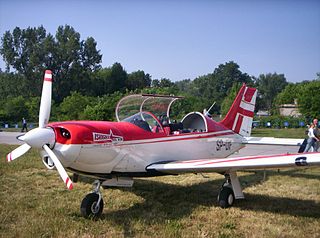
PZL M26 Iskierka or M26 Airwolf is a Polish trainer and aerobatic aircraft, designed at WSK PZL-Mielec.
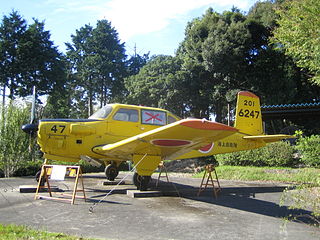
The Fuji KM-2 is a Japanese propeller-driven light aircraft, which was developed by Fuji Heavy Industries from the Beech T-34 Mentor which Fuji built under licence. Various versions have been used as primary trainers by the Japan Self-Defense Forces, with the KM-2B remaining in service with the Japan Air Self-Defense Force.
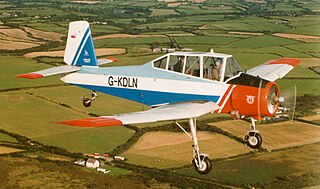
The Zlin Z-37 Čmelák, also known as LET Z-37 Čmelák is an agricultural aircraft which was manufactured in Czechoslovakia. It is powered by a Soviet-built Ivchenko reciprocating engine. The aircraft is used mainly as a cropduster.

The PZL-106 Kruk is a Polish agricultural aircraft designed and built by WSK PZL Warszawa-Okęcie.
The Boisavia B.260 Anjou was a four-seat twin-engine light aircraft developed in France in the 1950s. It was a low-wing cantilever monoplane of conventional configuration with retractable tricycle undercarriage. Intended by Boisavia as a touring aircraft, it did not find a market and only the single prototype was constructed. At this point, the firm sold the design to SIPA, which modified the design and re-engined it with Lycoming O-360 engines, but found that they could not sell it either. At a time when the twin-engine light plane market was already dominated by all-metal American aircraft, the Anjou's fabric-over-tube construction was something of an anachronism, and all development was soon ceased. Plans to develop a stretched version with three extra seats and Potez 4D engines were also abandoned.
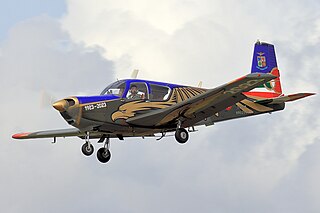
The SIAI-Marchetti S.205 is an Italian four-seat, single-engine, light airplane, manufactured by SIAI-Marchetti. The S.205 made its maiden flight in 1965. The Italian Air Force employs a version called S.208.

The Piaggio P.136 is an Italian twin-engine amphibian flying boat designed and manufactured by aircraft company Piaggio Aero. It is furnished with an all-metal hull, pusher propellers, a gull wing, and retractable landing gear.

The Italair F.20 Pegaso was a twin-engine utility aircraft designed by Stelio Frati and built in Italy in 1971.

The IAR-827 was an agricultural aircraft built in Romania in the 1970s and 1980s. The penultimate member of the family of designs that began with the IAR-821, it was, like the others, a conventional low-wing monoplane with fixed, tailwheel undercarriage, and shared the all-metal construction of the IAR-826. The prototype flew in 1976, powered by a Lycoming IO-720 engine, but the production examples that followed all had the PZL-3S.




